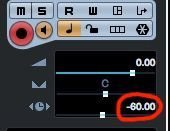I'm not seeing the difference between the playback "layer" in Dorico vs. how a DAW like Cubase plays back Midi files. I'm assuming that Dorico is playing back Midi derived from the score, sending Midi messages to whatever VST you have configured just like Cubase. Of course, Cubase has great Midi editing/viewing capability that you'd want to take advantage of, all the controller lanes, midi functions, logical editor etc. All of that would be useful to someone wanting more refined playback from a notated score. So I could see at least the Cubase Midi functionality being integrated with Dorico in some way.






